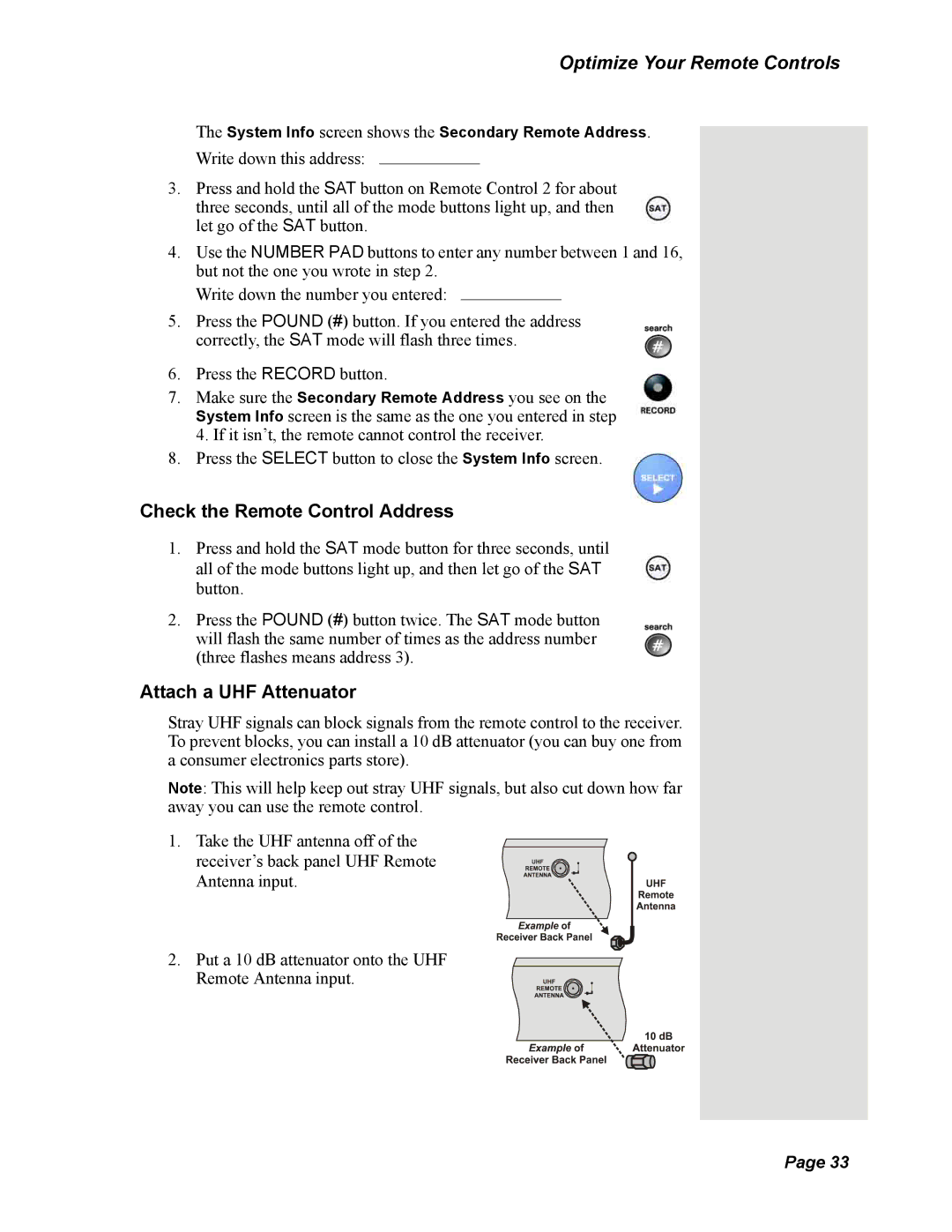
Optimize Your Remote Controls
The System Info screen shows the Secondary Remote Address.
Write down this address:
3.Press and hold the SAT button on Remote Control 2 for about three seconds, until all of the mode buttons light up, and then let go of the SAT button.
4.Use the NUMBER PAD buttons to enter any number between 1 and 16, but not the one you wrote in step 2.
Write down the number you entered:
5.Press the POUND (#) button. If you entered the address correctly, the SAT mode will flash three times.
6.Press the RECORD button.
7.Make sure the Secondary Remote Address you see on the System Info screen is the same as the one you entered in step 4. If it isn’t, the remote cannot control the receiver.
8.Press the SELECT button to close the System Info screen.
Check the Remote Control Address
1.Press and hold the SAT mode button for three seconds, until all of the mode buttons light up, and then let go of the SAT button.
2.Press the POUND (#) button twice. The SAT mode button will flash the same number of times as the address number (three flashes means address 3).
Attach a UHF Attenuator
Stray UHF signals can block signals from the remote control to the receiver. To prevent blocks, you can install a 10 dB attenuator (you can buy one from a consumer electronics parts store).
Note: This will help keep out stray UHF signals, but also cut down how far away you can use the remote control.
1. Take the UHF antenna off of the receiver’s back panel UHF Remote Antenna input.
2. Put a 10 dB attenuator onto the UHF Remote Antenna input.
Page 33
